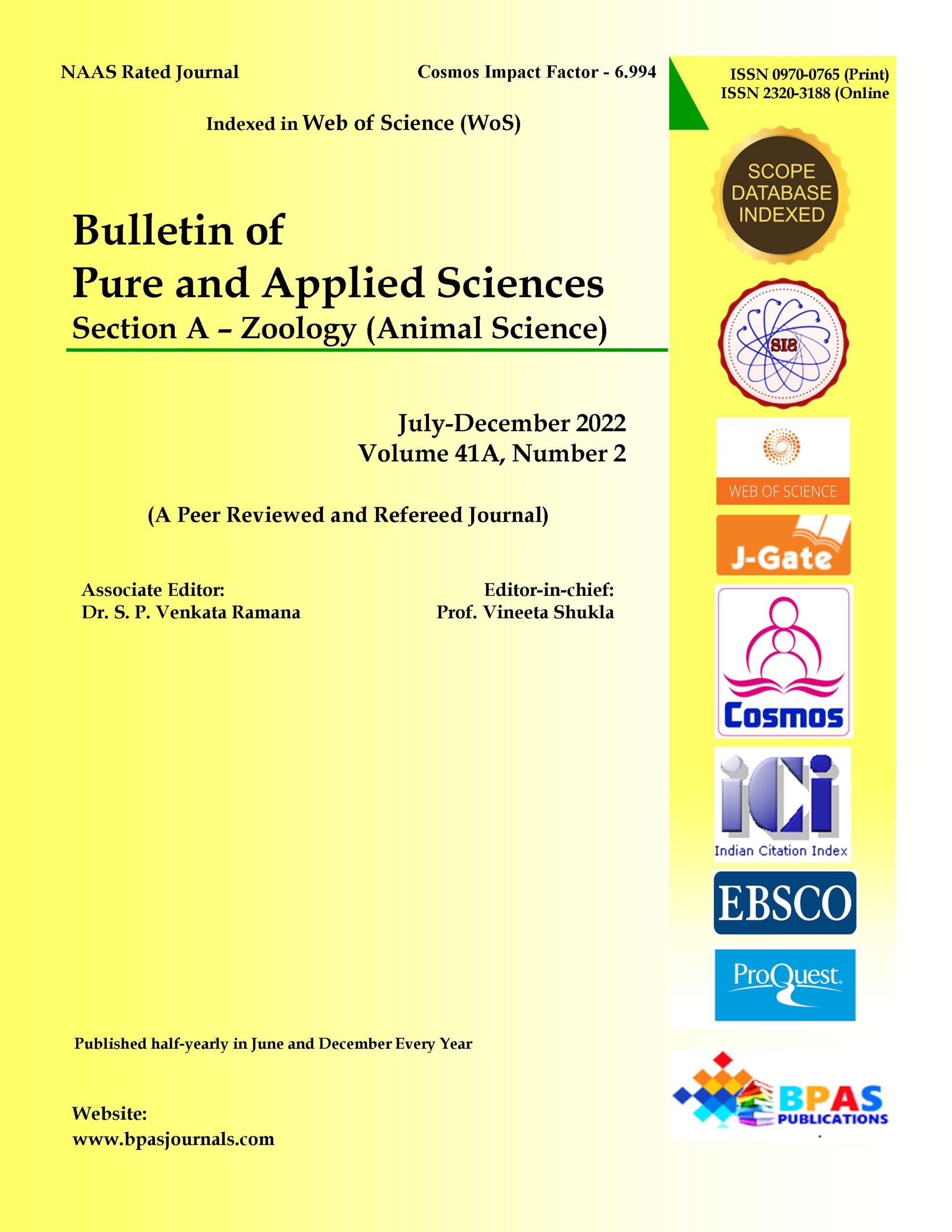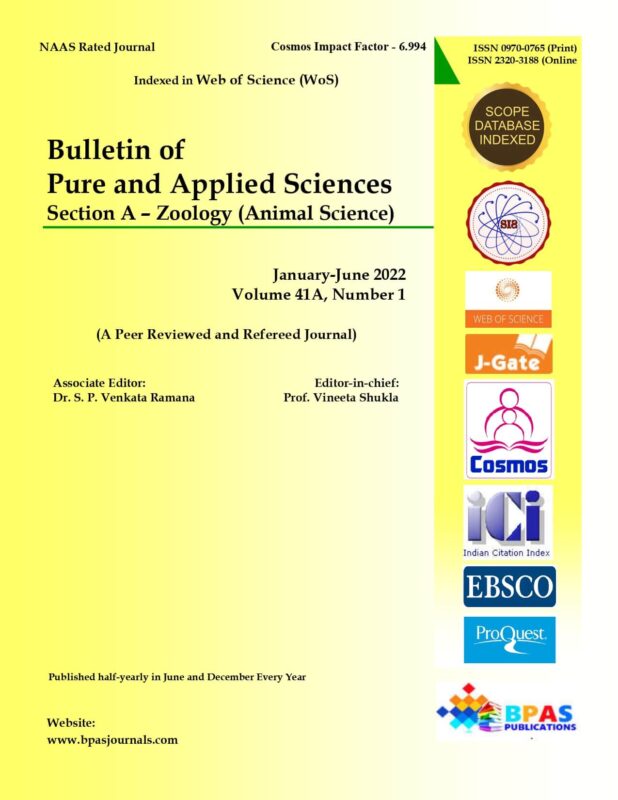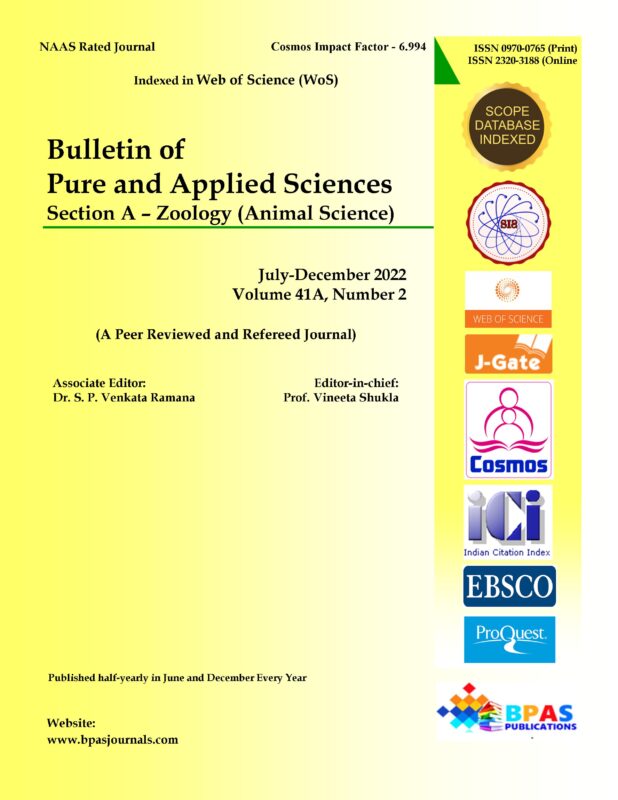Biology and Life Cycle of Candaharia levanderi (Simroth, 1901)
9.38$
Bulletin of Pure and Applied Sciences
Zoology (Animal Science), Vol.41A, No.2,
July-December 2022: P.262-266
DOI: 10.5958/2320-3188.2022.00032.8
Article Info:
Original Research Article
Received on 08.06.2022
Revised on 27.10.2022
Accepted on 29.11.2022
Published on 15.12.2022
Description
Biology and Life Cycle of Candaharia levanderi (Simroth, 1901)
Ruzikulova N.A.*
Author’s Affiliation:
Department of Natural Sciences, Uzbek-Finnish Pedagogical Institute, st. Spitamen Shoh, 66, Samarkand, Uzbekistan.
*Corresponding author:
Ruzikulova N.A.
Department of Natural Sciences, Uzbek-Finnish Pedagogical Institute, st. Spitamen Shoh, 66, Samarkand, Uzbekistan.
E-mail: nilruz.sam@mail.ru
How to cite this article: Ruzikulova N.A. (2022). Biology and Life Cycle of Candaharia levanderi (Simroth, 1901). Bulletin of Pure and Applied Sciences-Zoology, 41A (2), 262-266.



